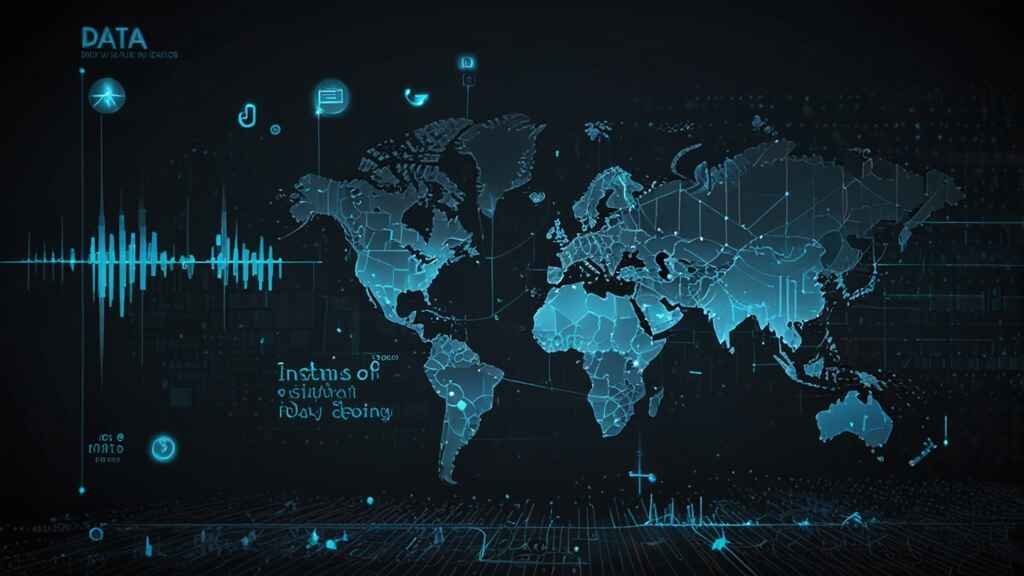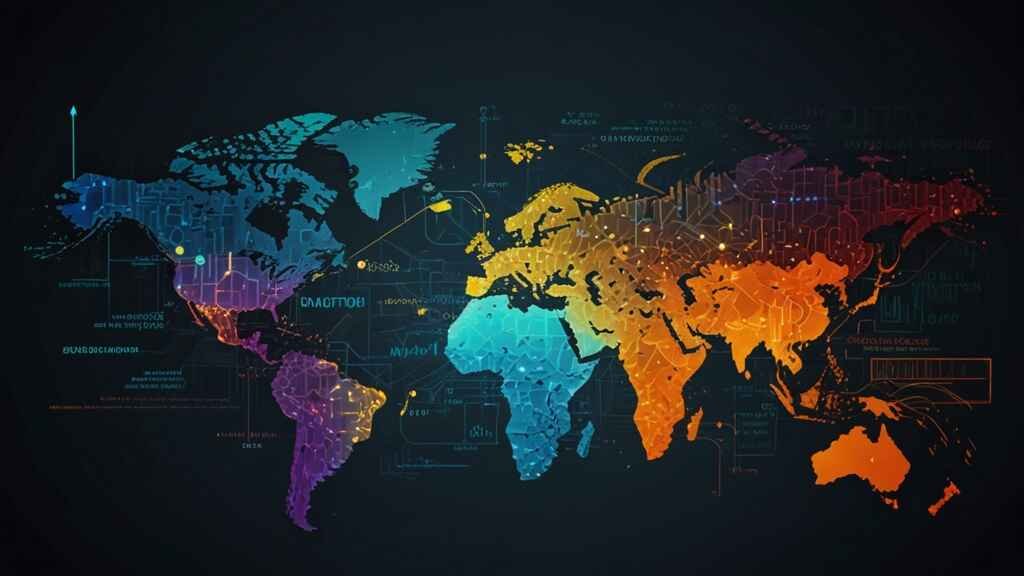Basics of Data Innovation – 2024
Information Technology Technology in the IT field has changed the way industries and even states function in the context of advanced civilizations and modern society. Understanding the fundamentals of IT, particularly the focus on data, is critical to moving forward. The article provides an overview of IT and its most critical aspects. Provides an introduction to data along with its importance in development and uses in various divisions.

1. What is IT?
Information Technology IT includes the use of computer networking hardware software and infrastructure to identify and process information, it includes a wide range of activities such as data storage, transmission, and processing. The foremost MAMA backs a wide range of solutions, from simple query systems to sophisticated artificial intelligence platforms.
IT encompasses several areas, including:
- Hardware: The tangible components like service routers and devices.
- Software: The applications and programs that manage information.
- Networks: The systems that enable data communication among devices.
- Data Management: The strategies and methods employed to store and organize data.
2. Introduction to Data Innovation
Data innovation, though a recent term, encompasses more than the development of technologies toward superior processes and the use of data in innovative manners to solve problems. It’s all about converting raw data into insight and solution. This idea acts as an essential driver for growth in many other fields as well, except in healthcare and finance.
a. The Evolution of Data Innovation
The rising tide of data innovation is related to our increased dependence on digital technologies. Big data, cloud computing, machine learning, and AI have moved our capacity to process data to a higher level, thereby making more information available for us. Where the focus is on collecting more, there is a greater interest in analyzing this data and extracting insights of actual value.
Data innovation has been observed to take place in three broad phases:
- Data Collection (The Data Era): In simple terms, it was all about collecting maximum data.
- Data Analytics (The Analytics Era): This came along when advanced computing tools developed and analytics started playing a major role in pattern identification within data.
- Data-Driven Innovation (The AI Era): AI/ML-driven innovation puts to use data so as to further develop predictive systems for innovation.
b. Key Concepts in Data Innovation
- Big Data: Large and unknown data states that traditional data processing systems cannot handle. Big data provides a way for an organization to gather a lot of information around a particular topic, that it can then analyze in aggregate.
- Data Analytics: Methods used to analyze data in order to reach conclusions – techniques range from descriptive inference through to prescriptive analytics.
- Machine Learning (ML): The state of AI at present, where algorithms learn from data in order to make programmatic decisions or predictions without making decisions.
- Data Mining: The extraction of useful information from big sets in order to structure the pattern trends and their relations.
3. The Role of IT in Data Innovation
IT serves as the backbone of data innovation. Without a solid IT infrastructure and the right technologies, we cannot efficiently collect, store, or analyze data. This applies whether we’re using traditional databases or modern solutions like cloud computing platforms.
Here’s how IT drives data innovation:
- Data Storage: IT systems provide database and storage solutions such as cloud storage that allow large amounts of data to be stored securely.
- Data Processing: IT fundamentals use powerful tools and software to process large data sets in real time to provide the basis for data analysis.
- Data Security: IT ensures that Ehsaas data is protected from breaches, hacks and unauthorized access.
- Networking: Facilitates data sharing between IT systems and devices to make data accessible in real time.

4. Data Innovation across Industries
With data continuing to reshape industries, the basics of data innovation offer companies new ways to gain competitive advantages, improve operations efficiency, and offer better experiences for their customers. Following are some of the key areas where data has influenced innovation most:
a. Healthcare
Data innovation is affecting every aspect of patient care, diagnosis, and tailored medicine. The capturing of continuous data through EHRs and wearables lets medical professionals and individuals alike make more educated choices.
- Predictive Analytics: Insights built on data let healthcare providers predict outbreaks of diseases, the health risks of patients, and even treatment outcomes.
- Personalized Medicine: With the use of genes and robustness of data, treatments can now be personalized to individuals in order to increase treatment effectiveness of the provided therapies.
- Improved Healthcare Delivery: Data innovation has really helped hospitals manage their patient records much more efficiently. This aids in collaboration and also reduces medical errors.
b. Finance
Besides, finance is one of the first industries to adopt such data innovation, as the financial world runs on data. Analyzing market dynamics, customer behavior, and risk factors, financial firms would have a better sense of where to make informed investment decisions.
- Fraud Detection: The tools of analytics keep monitoring every transaction and weed out suspicious activities, thereby increasing fraud detection.
- Algorithmic Trading: Financial Farming performs trades with very high speed, using data-driven algorithms, which enhances profitability in this aspect.
- Customer Personalization: The use of data by financial institutions to provide customized products and services for customers, with the aim of enhancing experiences and customer satisfaction.
c. Retail and E-Commerce
Retailers adopt data innovation to enhance customers’ experiences, optimize inventory management, and uplift marketing efforts.
- Customer Analytics: Retailers perform product recommendations and analyze customer purchase history and behavior in relation to those recommendations.
- Inventory Management: Data analytics empowers retailers to manage their stock levels more objectively and reduce starting and account-of-stock situations.
- Supply Chain Optimization: Data-driven insights enable retailers to optimize their supply chain with cost and time savings.
d. Manufacturing
Data as an innovation is transforming manufacturing as a function. This helps in operational efficiencies, reduced downtime, and improvement in the quality of the products.
- Predictive Maintenance: Through analysis of machinery performance, manufacturers can predict when an equipment will fail to prevent costly down time.
- Smart Factories: Analysis of data analytics helps the manufacturer optimize productions lines and process to reduce waste and improve product quality.
- Supply Chain Management: Manufacturers will manage their value chains better because of data-driven insights in ways to ensure material availability at the right time.
5. The Use of Emerging Technologies in Data Innovation
A set of emerging technologies are causing a change in how organizations manage and use data. These are opening up newer avenues for innovation in businesses to create value.
a. Artificial Intelligence and Machine Learning
AI and ML are the latest revolutions in data innovation. These technologies process large volumes of data to deliver intelligent decisions, automate processes, and provide personalized recommendations.
- AI Applications: These range from chatbots and autonomous vehicles. With data they acquire, they learn something new each day and change with every passing day.
- ML Algorithms: Machine learning models are used for predictive analytics. Predictive analytics allow a business to predict market trends, customer preference, and risks.
b. Internet of Things (IoT)
IoT devices gather data from the physical world in real time. Sensors embedded in everyday objects, like cars and industrial devices, create a continuous stream of data that informs user behavior about how the device is performing and about environmental conditions. Offers instructive value to users.
- Smart Cities: IoT devices monitor traffic patterns, energy usage, and air quality-all allowing cities to better optimize resources and enhance the living experience of residents.
- Smart Homes: IoT devices, including those used for thermostats, security systems, and smart speakers, offer ease, safety, and efficiency in homes.
c. Blockchain
Blockchain technology promises to revolutionize industries such as finance, healthcare, and supply chain management due to the benefits associated with providing tamper-free and transparent records of transactions, which are much more efficient and secure compared to conventional modes of recording transactions.
- Data Integrity: Blockchain provides integrity to the data against unauthorized modifications.
- Secure Transactions: Blockchain allows for secure, transparent, and traceable transactions that establish trust in financial systems.
d. Cloud Computing
Cloud computing enables companies to store and process data over the Internet without services. Cloud platforms can easily provide the scalability and flexibility required for managing large datasets and complex computational tasks.
- Cost Efficiency: As cloud computing spreads, the need for huge investments in hardware and infrastructure decreases.
- Scalability: In such a context, cloud platforms can scale up or down depending on demand, hence offering business the requisite flexibility while managing fluctuating data needs.
6. Challenges in Data Innovation
While data innovation does present immense opportunities, there are a considerable number of challenges, too. If an organization has to make the most out of data, it is imperative that all these challenges be dealt with.
a. Data Privacy and Security
With increasing availability and sharing of more and more data, associated privacy and security concerns arise. The companies have to implement strong security measures in order to protect Ehsaas Stata from breach and unauthorized access. Adherence to regulations such as the General Data Protection Regulation of Europe and the California Privacy Act of the US are a must.
- Encryption: A number of encryption techniques have been developed so as to keep data from unauthorized people by making it unreadable except to those authorized to access the data.
- Data Anonymization: These techniques help in protecting the privacy of individuals by eliminating personally identifiable information from datasets.
b. Data Quality
Accurate and complete data is very crucial in any successful data innovation. Poor-quality data may lead to wrong conclusions or flawed decisions.
- Data Cleaning: The investment by organization in data cleaning processes is necessary to weed out duplicates, errors, and inconsistencies from data sets.
- Data Governance: A robust data governance policy will ensure the accuracy, consistency, and validity of data.
c. Skill Shortages
The rapid changes in technologies have brought about an imbalance in the supply and demand for important skills in data-related matters. Most organizations even today lack qualified professionals who possess the right skills and expertise in data science, AI, and machine learning
- Training and Development: The organization should focus on the training and development processes to retain a skilled workforce and best talent.
- Collaboration with Educational Institutions: The businesses can collaborate with universities and colleges in developing curricula to fulfill the demand for industries.

7. The Future of Data Innovation
The future for data innovation is bright, with new technologies and trends that will further revolutionize how data is collected, analyzed, and put into use. Here are some to watch:
a. Edge Computing
Edge computing is an emerging paradigm where the processing of data is performed closer to where the data originates rather than transmitting it to a central data center. Creates spices for applications such as.
b. Quantum Computing
Quantum computing has been envisioned to impose a radical change in data mining during the present times by offering solutions to various complex problems that have so far been unreachable for classical computers. The drug towards which breakthroughs in fields as important as cryptography and climate modelling can be achieved.
c. Ethical AI
This is a great read because, as AI becomes more pervasive, effectiveness with regard to transparency and accountability within the decision-making of AI becomes more critical. It will also be crucial with respect to the development of ethics AI frameworks and accountability in making sure AI systems are fair and exhibit transparency in social values.
8. Conclusion
As information technology and data are at the heart of the digital revolution, understanding the basics of IT and how data analytics works is essential for individuals and organizations looking to thrive in a data-driven world in healthcare. From care to finance to retail to manufacturing, data innovation is changing directions and performance is driving new structures of personalization and value.As technology continues to evolve,
The scale of data will matter. Organizations that invest in beta infrastructure to embrace emerging technologies and overcome challenges such as data privacy and skills shortages will be well positioned to succeed in the future.

